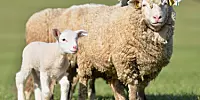When trying to be self-sufficient, thought must be given to where you get your protein from. This is usually meat, eggs and cheese with meat being the source which presents the most challenges.
Historically, in France, two important sources of small-scale home-grown meat have been birds and pork and, because of this, many French farmhouses have some very attractive buildings which were used to house farm animals.
The best-known and probably the most photogenic of these is the pigeonnier. These are usually tall, rectangular and built of stone, but there are exceptions and they can be round, single-storey or even incorporated into the main structure of the house if the property was considered too modest to sport a free-standing pigeonnier.
However, the history of the pigeonnier and the ability to rear and eat your own pigeons is closely tied to the French Revolution.
Historically, in France, pigeons were kept by anyone with the facilities to do so until the Middle Ages.
At that time, there was a marked cultural shift and from around that point only Royalty, the nobility and the clergy could keep them.
The keeping of pigeons became a status symbol as well as a valuable source of both food and fertiliser as the pigeon droppings, or guano, is rich in nutrients and excellent at conditioning soil, in much the same way as we use chicken manure today.
Ad
Elaborate stone pigeonniers were built to indicate both the wealth and the status of the landowner. These structures became, in effect, vertical poultry farms containing thousands of birds – and therein lay the problem that brought about their downfall.
Read more: How to keep hens as part of a self-sufficient life in France
Feeding the uprising
Ad
The nobleman who owned the pigeons did not have any obligation to feed them – the birds were free to fly wherever they wished to find food; often eating the crops of poor peasants who were legally banned from either killing or eating them.
Such was the hardship this caused that it was one of the principal grievances underpinning the French Revolution, and soon after the storming of the Bastille the law was changed.
From that point onwards anyone could keep and eat pigeons. The extravagant pigeonniers of the nobility were torn down or abandoned and ordinary citizens could rear pigeons in much more modest structures.
Times change, and these days people tend to eat migrating pigeons which are shot in the wild by huntsmen operating from woodland structures known as palombières.
The humble porcherie, or pigsty, meanwhile, never faced such controversy and the family pig was – and still is – an important part of the smallholder’s livestock portfolio.
They are relatively cheap to keep (pigs will eat just about everything), are prolific breeders and you can eat them from snout to tail. A typical porcherie was low, stone-built and with a tiled roof.
We have one: it is divided into two units, each with its own doorway and independent stone feeding trough which is divided into two sections – for food and water. The pig, left to its own devices, will dig up your land, so the porcherie is usually enclosed.
Read more: Mystery around deaths of pigeons in Dordogne village
Day of doom
Together with a group of friends, we spent several years buying a share in a pig or two and raising them on a friend’s farm up in the Dordogne.
The pigs ranged freely in a large field and woodland, and it was extremely hard not to get attached to them – especially when the day of doom arrived and the pigs were driven to the abattoir in Bergerac to be slaughtered.
They were returned to us and we would assemble in our friends’ barn to butcher them.
One year was particularly memorable because when our pigs were brought back from the abattoir none of them had any kidneys. I hope whoever removed them enjoyed them.
It is not easy to kill, butcher and eat an animal that you have raised from a piglet, fed apples to and generally grown very fond of – but our attitude was that it is better to eat an animal that has had a happy, free-range life than one that has been intensively reared.
In France, providing you rear the animal yourself, eat all of it yourself and work to approved abattoir standards, you can still slaughter your own pigs, but we felt that sending them to an abattoir meant that their deaths would be fast and professionally done.
The standard of butchery, in my case, was pretty pitiful, but the meat was delicious and we knew that the animals which produced it had happy lives, free from antibiotics and the stress of living in industrial farming units.
Read more: New war monument in Paris honours animals that died in service




























